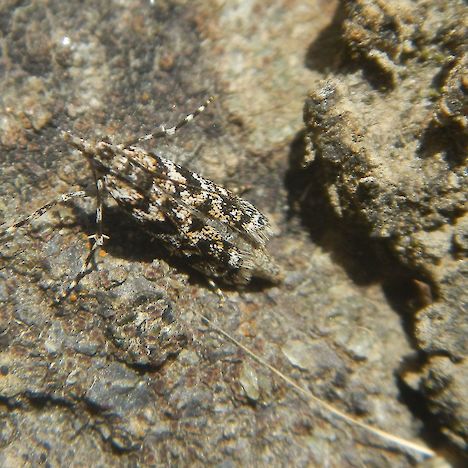Threat category:
At Risk: Naturally Uncommon?Regions:
Marlborough, CanterburyDistribution:
Northeast of the South Island as far south as Banks Peninsula
Key Features
- Gadira petraula is a small moth (Lepidoptera: Crambidae).
- The wingspan is 16.5–20 mm for males and 9.5–11.5 mm for females.
- The forewings are white, tinged with greyish and irrorated with blackish. The hindwings are grey, but darker posteriorily and with a pale line just before the hindmargin.
- It is very similar to Gadira leucophthalma, and on Banks Peninsula the two species can be found together.
- The forewing dorsum (trailing edge) is mostly unicolorous whitish to grey in G. leucophthalma, whereas it is patterned in grey and black in the slightly smaller G. petraula.
- Gadira petraula has a short-winged female in contrast to G. leucophthalma.
Distribution and Habitat
- Gadira petraula is found in the northeast of the South Island as far south as Banks Peninsula.
- It inhabits rocky places from steep rock faces to mountainous rocky ridges and pavement, all with a cover of lichens (on whch the lavae feed).
Threats
- Loss of habitat due to earthquakes.
- Disturbance of habitat and fragmentation of populations as a result of road-making, farming practices and stock rubbing against rocks.
- The flightless female has limited dispersal ability.
Management Opportunities
- Protect rocky habitat from disturbance.
Monitoring Options
- This species is difficult to monitor due to its rarity.
- A standardised count of larval feeding signs, using the conspicuous webbing of the mature larvae as an indicator, can be used.
- Undertake monitoring in September.
Further Information and Support
- Landcare Research Threatened species Factsheet.
- Patrick B.H. and Dugdale J.S. 2000. Conservation status of New Zealand Lepidoptera. Science for Conservation 136. Department of Conservation, Wellington. 33 pp. Link.


